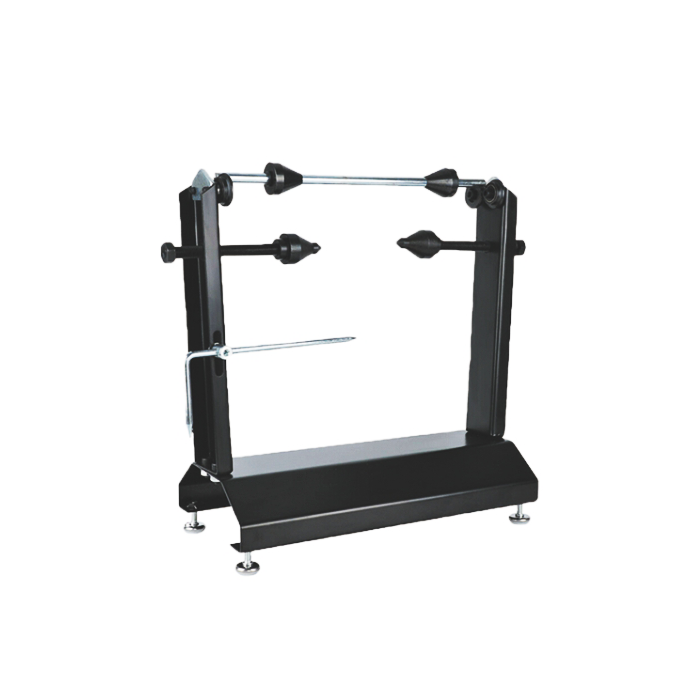Understanding the Importance of Wheel Balancing
The Physics Behind Wheel Balance
Wheel balancing is rooted in fundamental physics principles. When a wheel rotates at high speeds, even minor weight discrepancies can create significant centrifugal forces. These forces manifest as vibrations, potentially leading to handling issues and accelerated tire wear. Understanding this concept is crucial for appreciating the importance of proper wheel balancing.
Impact on Motorcycle Performance
A well-balanced wheel contributes significantly to your motorcycle's overall performance. Using a motorcycle wheel balancer stand ensures smooth acceleration, precise handling, and optimal tire grip. Conversely, an unbalanced wheel can lead to wobbling, decreased fuel efficiency, and compromised safety, especially at higher speeds. Regular wheel balancing is an investment in your motorcycle's longevity and your riding experience.
Long-term Benefits of Proper Balancing
Consistent wheel balancing offers numerous long-term advantages. It extends tire life by promoting even wear across the tread surface. This practice also reduces stress on suspension components, potentially saving you money on future repairs. Moreover, a balanced wheel minimizes vibrations, enhancing rider comfort and reducing fatigue during long journeys. By incorporating regular wheel balancing into your maintenance routine, you're ensuring optimal performance and safety for your motorcycle.
Essential Tools and Equipment for Wheel Balancing
Choosing the Right Motorcycle Wheel Balancer Stand
Selecting an appropriate motorcycle wheel balancer stand is paramount to achieving accurate results. Look for a stand with a sturdy construction, preferably made from high-quality materials like steel or aluminum. Ensure it has adjustable features to accommodate various wheel sizes and types. A good balancer stand should have a level bubble indicator for precise setup. Consider models with removable adapters for different axle sizes, enhancing versatility. Remember, investing in a quality balancer stand will yield more reliable results and last longer.
Balancing Weights: Types and Applications
Balancing weights come in various types, each suited for different wheel designs. When using a motorcycle wheel balancer stand, clip-on weights are commonly used for alloy wheels, attaching easily to the rim edge. Adhesive weights are ideal for modern, complex wheel designs where clip-ons might not fit. Some riders prefer powder-coated or zinc-plated weights for corrosion resistance. When selecting weights, consider your wheel type, riding conditions, and aesthetic preferences. Always use weights designed specifically for motorcycles to ensure proper fit and performance.
Additional Tools for Precision Balancing
Beyond the balancer stand and weights, several tools can enhance your wheel balancing precision. A digital level helps ensure your work surface and balancer are perfectly horizontal. Centering cones assist in properly aligning the wheel on the balancer shaft. A wheel weight plier facilitates easy application and removal of clip-on weights. For adhesive weights, a cleaning solution and applicator ensure proper adhesion. These auxiliary tools, while not always essential, can significantly improve the accuracy and efficiency of your wheel balancing process.
Step-by-Step Guide to Balancing Your Motorcycle Wheel
Preparation and Setup
Begin by thoroughly cleaning your wheel and tire, removing any debris or old balancing weights. Inspect the tire for any damage or uneven wear patterns. Set up your motorcycle wheel balancer stand on a flat, level surface. Use a digital level to ensure perfect horizontal alignment. Lubricate the balancer shaft with a light oil to minimize friction. Gather your balancing weights, weight pliers, and any other necessary tools. This meticulous preparation sets the stage for accurate balancing.
Mounting and Initial Assessment
Carefully mount the wheel onto the motorcycle wheel balancer stand, ensuring it's centered using the appropriate adapters or centering cones. Secure the wheel firmly, but avoid overtightening, which could affect its natural balance. Spin the wheel gently and allow it to come to a stop naturally. Observe where the wheel settles - the heaviest point will rotate to the bottom. Mark this position on the tire with chalk. Repeat this process several times to confirm consistency. This initial assessment provides valuable insights into the wheel's current balance state.
Fine-tuning and Verification
Based on your initial assessment, begin adding small weights to the opposite side of the wheel from where it consistently stops. Start with minimal weight and gradually increase as needed. After each adjustment, spin the wheel again and observe. The goal is to reach a point where the wheel stops randomly at different positions, indicating even weight distribution. Once you achieve this, perform a high-speed spin test to simulate road conditions. Listen for any unusual sounds and feel for vibrations. Make final adjustments if necessary. Remember, patience is key in this fine-tuning process. A perfectly balanced wheel will spin smoothly and come to rest in varying positions.
Conclusion
Mastering the art of setting up your motorcycle wheel balancer correctly is a valuable skill for any rider. By understanding the physics behind wheel balance, choosing the right tools, and following a meticulous step-by-step process, you can ensure optimal performance and safety for your motorcycle. Remember, wheel balancing is not a one-time task but an ongoing maintenance practice. Regular checks and adjustments will keep your ride smooth, extend your tire life, and enhance your overall riding experience. With patience and precision, you can achieve professional-level results in your own garage.
Contact Us
Ready to elevate your motorcycle maintenance game? For more information about our high-quality motorcycle wheel balancer stands and other maintenance tools, don't hesitate to reach out. Contact us at info@runva.com.cn and take the first step towards smoother, safer rides today!

_1737625693698.webp)


